Examples of Plants with Taproot System
Plants are an essential part of the environment. We cultivate them for food, for building material, and for beautifying our surroundings.
But before you plant any in your garden, it’s good to understand their specific root systems and the best conditions for their growth. In this article, we look at taproots and 25 plants that have this type of root system.
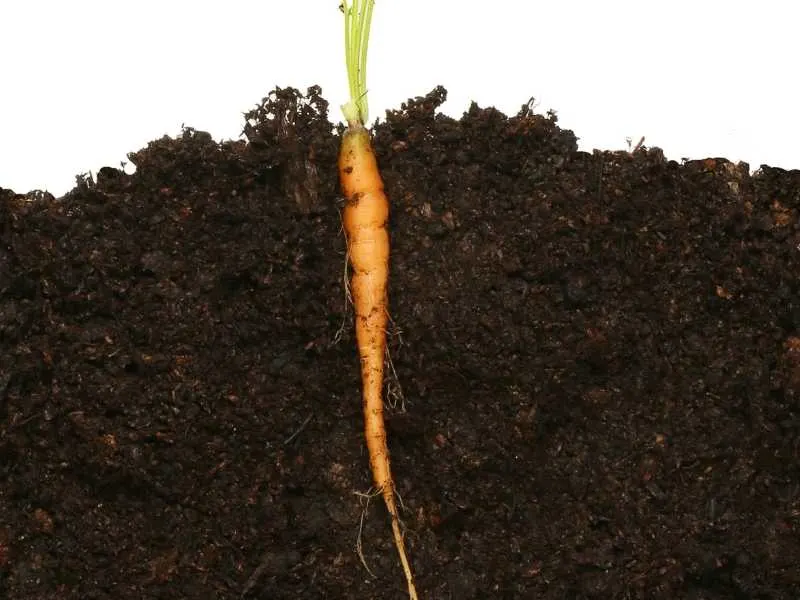
What Is A Taproot System?
The taproot system has a dominant central root, with secondary roots branching from its sides. This root system is standard in dicotyledonous plants and grows directly downwards from the radicle.
Most plants with taproots firmly anchor in the soil and can survive drought conditions as the roots can stretch to great depths for water.
Evolutionary biologists believe that taproots evolved from fibrous roots to adapt to plants growing in dry areas.
The leaves of plants with the taproot system usually have reticulate venation. In some plants like root vegetables, the taproot is adapted to store water and products of synthesis.
However, taproots are insufficient in preventing soil erosion as they do not hold surface soil particles firmly together.
Related Articles:
Types of Taproots
The root’s shape at maturity forms the basis for classifying taproots. There are three main taproot types:
- Conical Taproot: This is the most common type of taproot. This root type has a wide top and taper toward the bottom end to give them a conical shape.
- Fusiform Root: If you have seen the root of radish, then you already know this taproot type. It has a wide middle section and tapers toward both ends, forming a two-sided fusion of conical roots.
- Napiform Root: This taproot type has a wide top and tapers suddenly to a pointed bottom end. The main difference with conical taproots is that napiform roots are more petite and look like they grew in a confined space.
25 Plants with Taproots
Here are examples of plants with tap root system:
#1. Beetroot

Beetroot forms from the enlarged taproot of the beet plant and has a deep purple coloration. It’s a type of napiform taproot, eaten raw or as part of many dishes and juices.
People cultivate this vegetable for its roots, though it is wholly edible.
#2. Burdock
The burdock plant is famous worldwide for its medicinal qualities. It’s root is another example of tap root system. The fusiform taproots allow the plant to grow in most environments globally.
The roots are available as tea additives, crushed powder pills, an herbal tincture, or as a decoction.
#3. Carrot
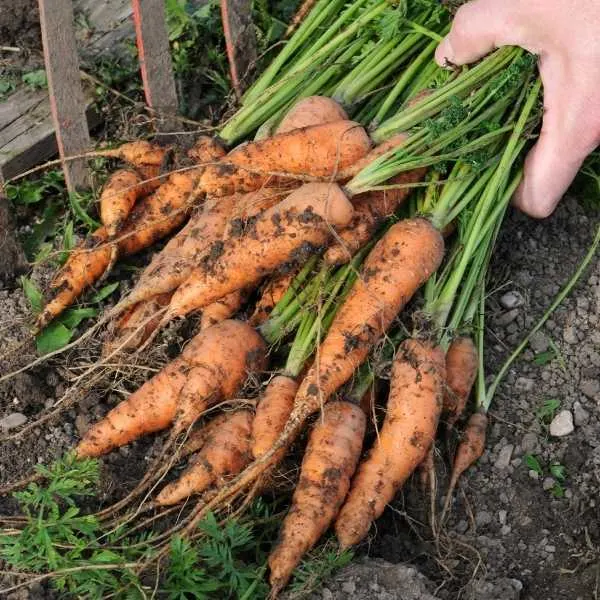
The carrot is a conical taproot, popularly grown worldwide as a vegetable. You can eat them raw or cooked.
#4. Sugar Beet
The sugar beet plant has a conical, white, fleshy taproot with a flat crown. The root contains 75% water, about 5% pulp, and 20 % of starch.
#5. Dandelion
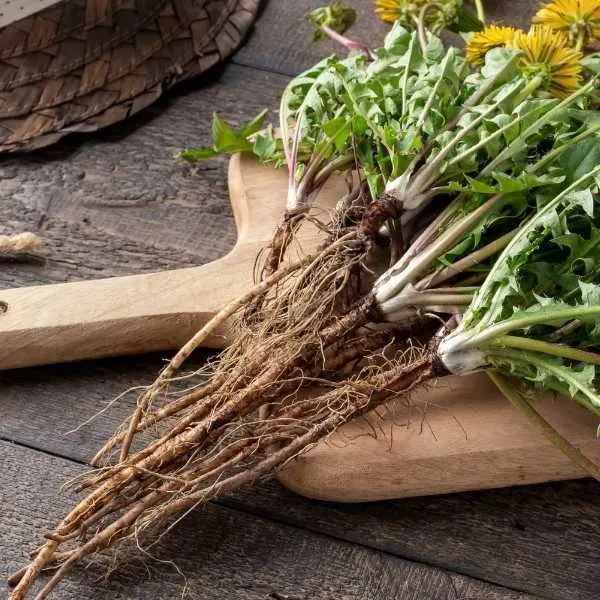
Dandelion is a widespread weed with beautiful yellow flowers. The dandelion plant has a strong taproot that can go as deep as 10 feet or more.
Though dandelion is a common people and pet food, it’s challenging to eliminate as buds regenerate quickly on the uppermost part of the root.
#6. Elms
Elms are notorious invasive trees and can grow up to 50 feet high with a foliage diameter of 60 feet.
It develops deep taproots if planted on dry soils, but the roots grow down 3 to 4 feet deep in heavy and wet soils.
The tree grows and spreads rapidly, and if not controlled, it quickly crowds out other plants.
#7. Pines
Pine trees produce high-quality timber. The taproot system of pine can go down twice the tree’s height, depending on the soil type and availability of water and nutrients.
#8. Douglas-Fir Tree
This tree has a strong taproot, with equally solid secondary, lateral, and fine roots.
The majority of the roots crowd near the stem but may extend for more than 10 feet vertically and horizontally.
The tree produces high-quality wood for building purposes.
#9. Mango
Mango trees provide delicious and nutrient-packed fruits. The plant features a strong and overly invasive taproot system, which can extend greatly vertically and horizontally.
The tree is a wild feeder and quickly crowds out other plants around it.
#10. Papaya
The taproot system of the papaya plant is predominantly non-axial and comprises one or two long taproots and several secondary roots on the upper sections of each taproot.
The taproots can go as deep as a meter.
#11. Jackfruit
Jackfruits are large, nutritious, and delicious. The jackfruit tree achieves a height of about 100 feet and thrives well in humid, low-lying areas.
The taproot system can spread as much as 7 feet horizontally and 40 feet vertically.
#12. Radish
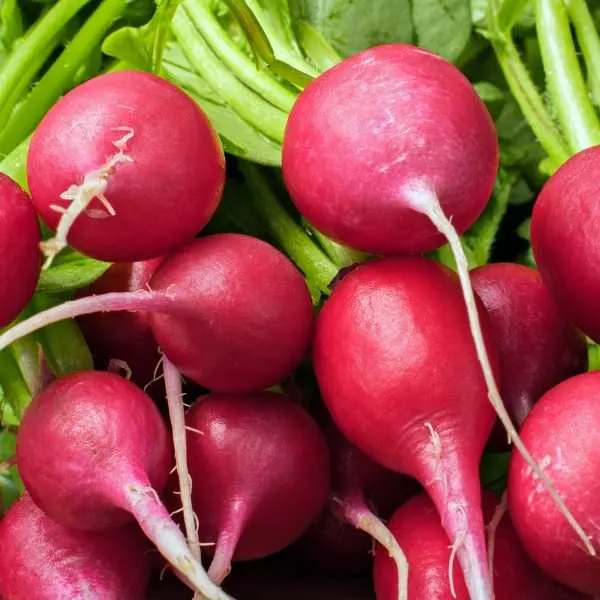
Radishes are wholly edible. The plant requires deep soils to develop properly, but it can also do well in tall containers.
The taproots and feeder roots can extend down twice the length of the edible radish part and thus need 8-20 inches of soil depth.
#13. Sagebrush
Sagebrush leaves, fruits, and seeds are popular food for animals. The plant also provides a favorable environment for understory plants and protects them from overgrazing.
It prefers deep and fertile soils, with its taproot going as deep as 4 meters and the lateral roots spreading around the tree near the surface.
#14. Turnip
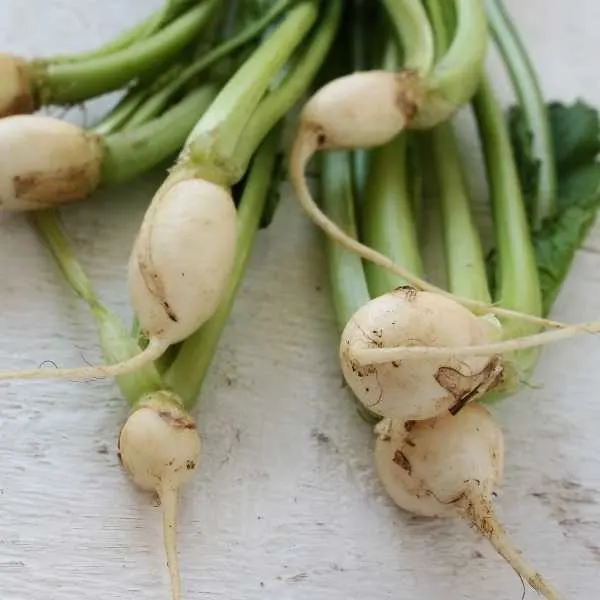
Turnips are a cruciferous vegetable grown for their health benefits.
The plant features a napiform taproot, which thickens as it stores more food. The stems grow directly on the uppermost part of the taproot.
#15. Common Milkweed
Common milkweed is potentially poisonous but has medicinal benefits for warts and dysentery.
The plant has a taproot system that can grow 13 feet deep and lateral roots up to 10 feet horizontally.
#16. Cannabis
People have used cannabis for medicinal purposes for more than 3000 years.
This plant has a taproot system during its vegetative stage and later develops a fibrous root system to absorb more nutrients during flowering and seed production.
#17. Oaks
An oak tree has medicinal as well as air-cleansing benefits. It’s a tree belonging to the Beech family and lives for up to 400 years.
The taproot system extends horizontally up to 3-7 times the crown’s diameter and 18 inches below the ground surface.
#18. Parsley

Parsley is a shallow-rooted herb grown for food. The roots extend 6 to 12 inches below the soil surface and spread about 2 inches around the soil.
Both the parsley leaves and stems are wholly edible and have medicinal value.
#19. Parsnip
Parsnips have fleshy, cream-colored edible taproots. They may take a cylindrical or bulbous shape upon maturity.
The taproot is very similar to carrots and can reach up to 2 feet below the soil.
#20. Poppy Mallow
Poppy mallow roots are used as a decoction for treating internal pain.
However, you may need to dig deeper as the taproot can go as deep as 6 feet, but the top of the root is usually 2 to 3 inches wide.
Hardwood Trees with Taproots
Hardwood trees feature among the deepest stretching and extending taproots. They mainly have conical taproots, which go to crazy depths to ensure the tree survives drought conditions.
The trees are primarily for building materials, though some provide edible fruits and medicinal properties.
The five hardwoods listed below conclude our list of 25 plants with taproots:
#21. Walnut tree
#22. Hickories
#23. Black gum
#24. Japanese Pagoda
#25. Hornbeam
Conclusion
You can see that there are many popular plants that are taproot system examples. If you didn’t know much about taproots, this article provides a solid foundation. I hope you enjoyed the read.

References
